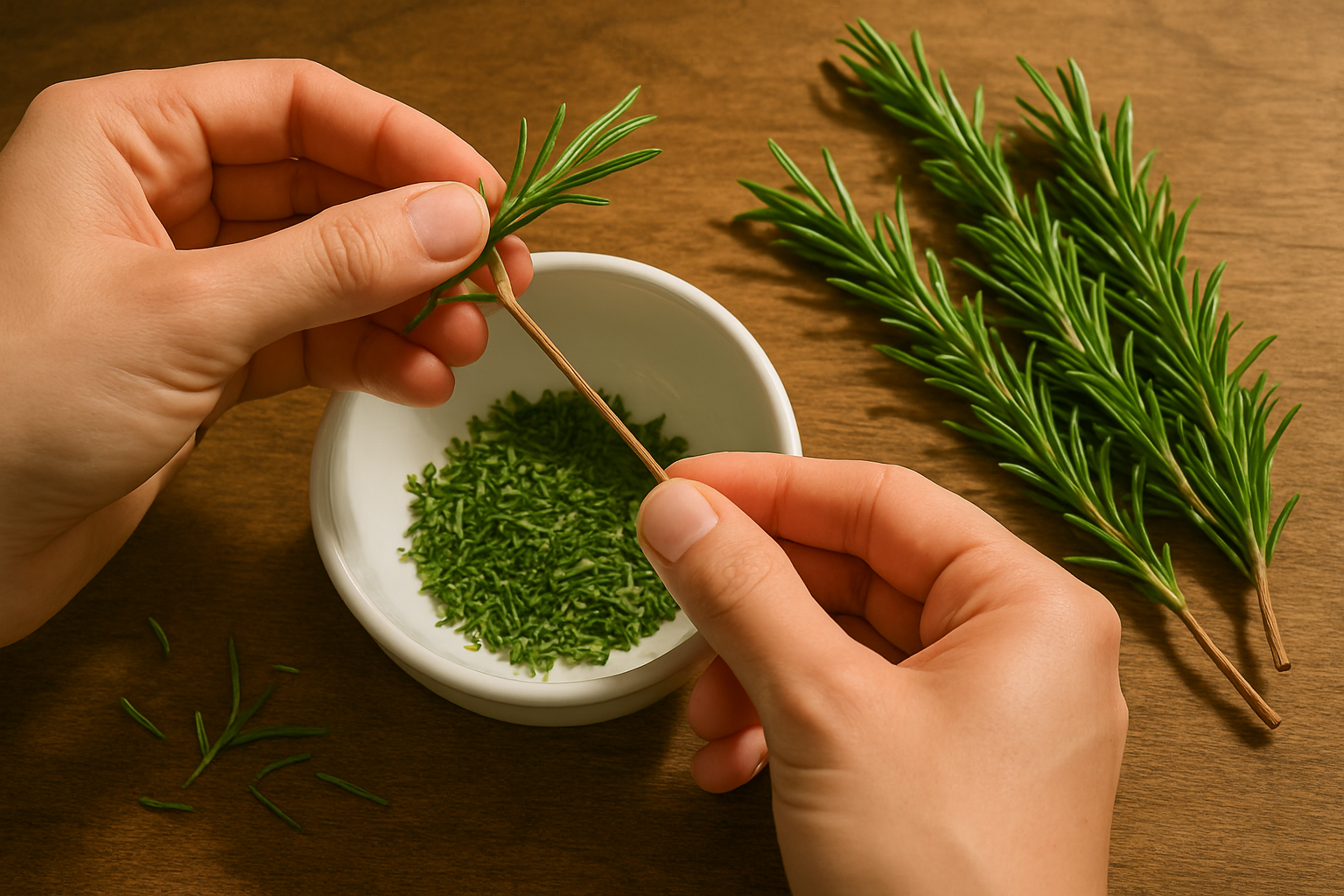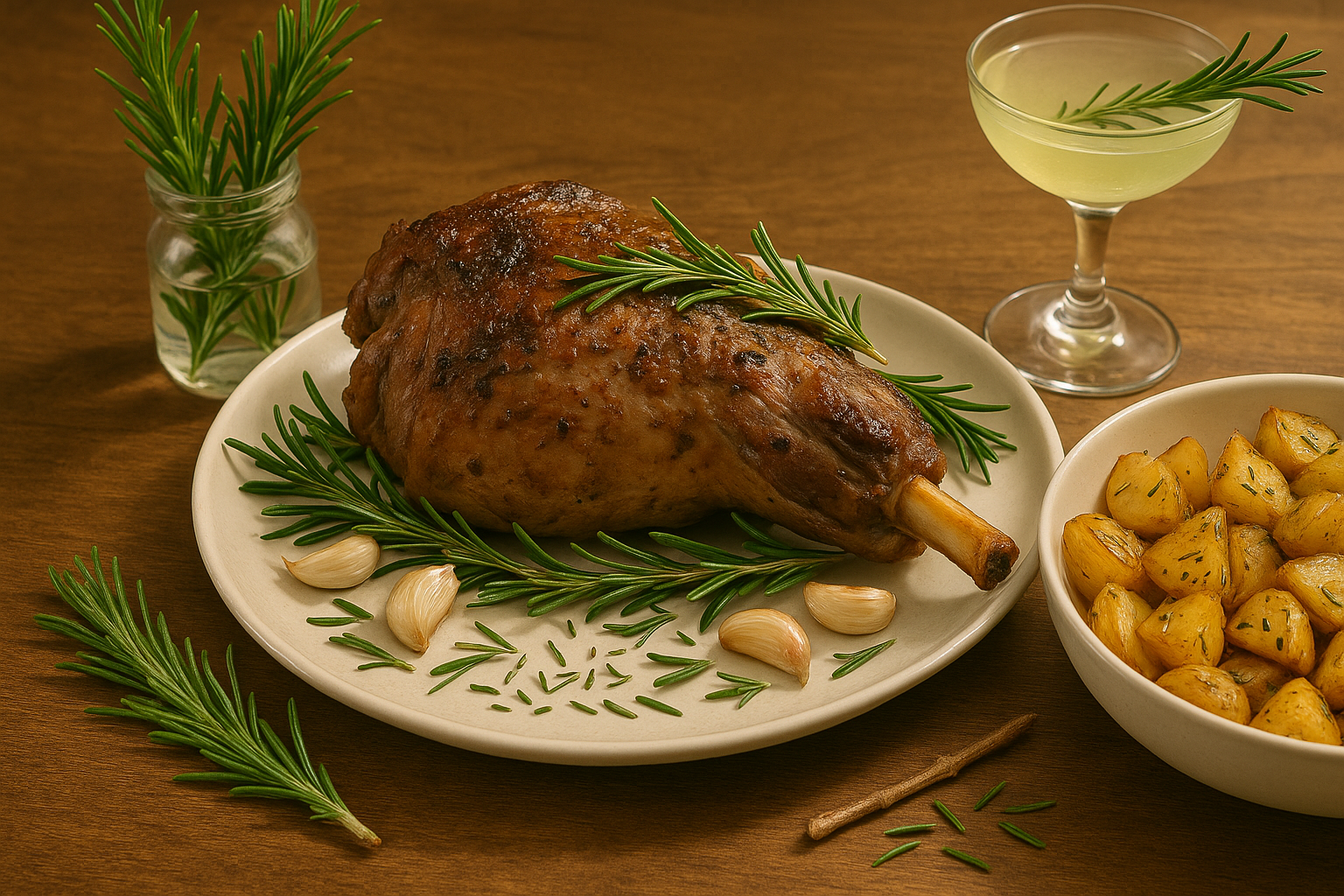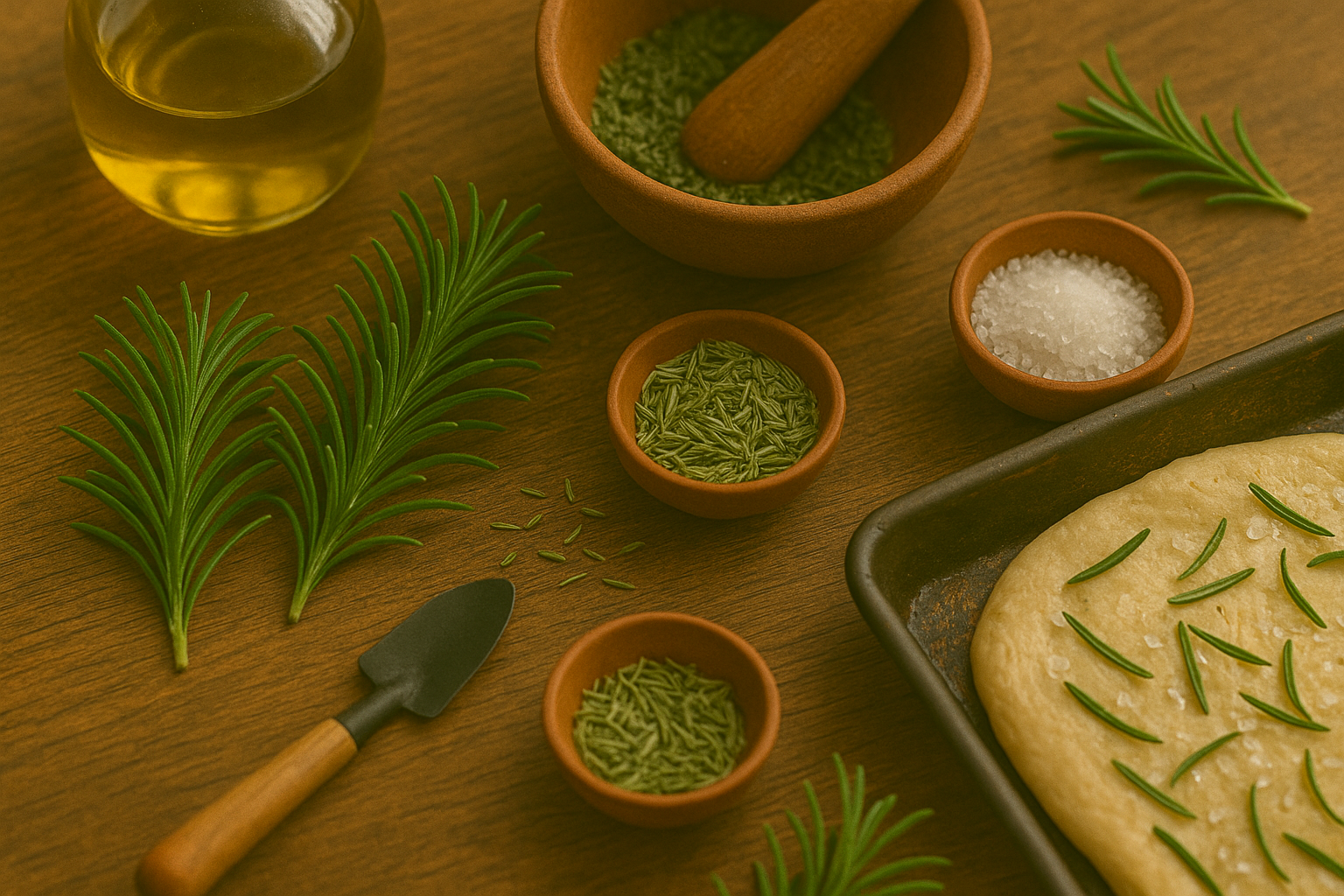Introduction to Rosemary
Cooking with rosemary has deep roots stretching back to ancient civilizations. Originally native to the Mediterranean, rosemary has been treasured for centuries not just for its aromatic qualities but also for its potential health benefits and practical uses. The ancient Greeks and Romans believed rosemary improved memory and used it in both cooking and ceremonial practices. Over time, this hardy herb made its way into kitchens around the world, where it remains a favorite among cooks for its distinctive piney aroma and bold flavor.
Why is cooking with rosemary so beloved across diverse cuisines? This evergreen herb elevates everything from rustic breads and roasted meats to vegetable medleys, infusing dishes with a fragrance and taste that’s both earthy and refreshing. Its needle-like leaves hold up well to heat, making rosemary a go-to herb for grilling, roasting, and even baking. Its versatility in the kitchen is matched only by its storied history.
But when it comes to cooking with rosemary, should you reach for a fresh sprig or dried leaves? This question sparks debate among chefs and home cooks alike, as the choice between fresh and dried rosemary can impact aroma, flavor, and even the texture of your dish. In this article, we’ll explore the differences and help you decide which option best enhances your next culinary creation.
Fresh Rosemary

Fresh rosemary is instantly recognizable by its slender, needle-like leaves and vibrant green hue, adding a touch of evergreen beauty to your kitchen. When you rub the leaves between your fingers, a bold, woodsy aroma fills the air—think pine with a hint of citrus and a touch of pepper. This intensity sets fresh rosemary apart from its dried counterpart, making it a favorite for recipes that need both fragrance and flavor.
Fresh rosemary shines when roasting meats like lamb, chicken, pork, or even hearty vegetables such as potatoes and carrots, where its oils can deeply infuse during cooking. Try adding whole sprigs to stews or tucking them under poultry skin before roasting for a subtly layered flavor. Chopped rosemary is also fantastic kneaded into bread dough for homemade focaccia or sprinkled on top of flatbreads and pizzas.
For the best results, strip the leaves off the tough stem by holding the top and gently running your fingers in the opposite direction of growth; then, mince the leaves finely to avoid a chewy texture. To keep rosemary fresh, wrap the sprigs in a damp paper towel and store them in a resealable bag in the refrigerator—they should last about one to two weeks this way. Alternatively, standing the stems in a glass of water like a bouquet keeps them perky for several days.
To maximize its flavor, add rosemary earlier during roasting or grilling but later for delicate dishes or garnishes, so the strong oils don’t overpower the meal. With its versatility and punchy character, fresh rosemary can transform even basic recipes into something special.
Dried Rosemary
Dried rosemary stands apart from its fresh counterpart in a few key ways that make it especially useful in many kitchen scenarios. While fresh rosemary delivers a softer, piney aroma and tender, needle-like leaves, the dried version intensifies these flavors but can taste a bit more woody or resinous due to the dehydration process.
The texture shifts too—dried rosemary tends to be prickly and brittle, so it needs either a longer cooking time to mellow out or a quick crush in your palm or mortar to break up the tough needles.
One big advantage of dried rosemary is its near-limitless shelf life; just keep it sealed in a cool, dark spot, and it’ll stay fragrant for up to a year, unlike fresh sprigs, which wilt within days.
Practical Uses
Dried rosemary shines in hearty, slow-cooked dishes like stews, braises, or roasted meats, where long simmering times let the dried leaves mellow and infuse deep flavor into the food. It’s also a classic addition to homemade spice blends, marinades, and rubs—perfect when you want to buy in bulk without worrying about waste, making it a great cost-saver for budget-conscious kitchens.
Substitution Tips
When substituting for fresh, use one-third the amount—usually the rule is: 1 teaspoon dried = 1 tablespoon fresh—since the concentrated nature of dried herbs can easily overwhelm a dish.
For best results, add dried rosemary early in the cooking process or try steeping it in hot liquids to extract the full aroma. If you want a finer texture in your recipe, a quick blitz in a spice grinder or food processor prevents hard, woody bits from sneaking into your finished dish.
These simple swaps and prep tricks make dried rosemary a handy, economical staple in all kinds of savory cooking.
Key Differences
Fresh and dried rosemary come from the same plant, but they behave quite differently in the kitchen. Fresh rosemary has a bright, piney flavor with subtle citrus notes and a tender-yet-sturdy texture, making it perfect for garnishing roasted potatoes or layering into focaccia dough.
Dried rosemary, on the other hand, is much more concentrated—its flavor is robust, almost resinous, and can easily overwhelm a dish if not measured carefully. The drying process intensifies the herb’s essential oils, so you’ll need less of it. A general rule is to use one-third the amount of dried rosemary when substituting for fresh (for example, if a recipe calls for 1 tablespoon of fresh, swap in 1 teaspoon of dried). The reverse is also true—if you need to replace dried with fresh, triple the measured quantity.
When using dried rosemary, it’s best to crush the leaves between your fingers or with a mortar and pestle to release flavor and avoid the needles’ tough texture. Dried rosemary excels in slow-cooked dishes like stews, soups, or braises, where it has time to soften and infuse. Fresh rosemary, meanwhile, shines in quick-cooking recipes—think salads, breads, or grilled meats—where its bright aroma can stand out.
Don’t add dried rosemary at the last minute, as its texture can be sharp and woody; always give it time to cook. Conversely, don’t add fresh rosemary too early in a long cook—it can lose its delicate aroma and turn bitter. If you’re making a marinade or dressing, fresh is preferable for its gentleness, but toss in dried if that’s all you have and let it sit a little longer to rehydrate.
In short, match the rosemary to the recipe style, and always adjust the quantity for potency to keep your dishes balanced and flavorful.
Classic Dishes Showcasing Rosemary

Rosemary’s piney fragrance elevates classic dishes across many cuisines, with some recipes relying on its bold, distinctive flavor to truly shine. A leg of roast lamb infused with garlic and fresh rosemary sprigs is a timeless centerpiece—fresh rosemary works best here, tucked into slits in the meat for maximum flavor.
Similarly, classic focaccia bread is transformed by a topping of fresh rosemary, which crisps up in the oven and releases aromatic oils, making every bite irresistible. For roasted potatoes, both fresh and dried rosemary work well; toss chunked potatoes with olive oil, salt, and either form of rosemary before baking for a golden, herby side dish.
Rosemary even finds a home in cocktails: muddle fresh rosemary in a gin and tonic, or infuse simple syrup with dried rosemary for a herbal twist on lemonade or a rosemary old fashioned. When making marinades for chicken, pork, or vegetables, dried rosemary’s concentrated flavor stands up well to longer soaks and cooking times.
For an easy weeknight dish, create a pan sauce by sautéing chicken breasts with dried rosemary, garlic, and lemon zest, then finish with a splash of broth. Or try roasting carrots and parsnips with fresh rosemary and a drizzle of honey for a sweet-savory side.
In general, choose fresh rosemary for recipes where you want vibrant, aromatic notes and a lovely garnish, while dried rosemary is perfect when slow-cooking or marinating, allowing its earthy essence to infuse the dish. No matter which you choose, rosemary’s unmistakable taste instantly signals something homemade and special, whether it’s a rustic Italian loaf, a hearty roast, or a simple midweek meal.
Cooking Tips and Common Mistakes
When using rosemary in your recipes, handling it properly makes a big difference. For fresh rosemary, strip the leaves from the woody stems before chopping or crushing them—this releases more of the aromatic oils and ensures a tender texture in finished dishes. With dried rosemary, the leaves can be tough and needle-like, so lightly crush them between your fingers or with a mortar and pestle before adding to your food.
To infuse subtle rosemary flavor, try simmering a sprig whole in soups, stews, or oils, then remove it before serving.
One common mistake is going overboard; rosemary can quickly dominate the dish’s flavor, especially when dried. Start with a small amount, taste as you go, and add more only if needed. Another frequent error is leaving tough stems in the mix, which can create unpleasant bites.
Remember that rosemary pairs best with bold flavors—think roasted meats, potatoes, or rustic breads—but can overpower delicate ingredients if used without restraint. If you accidentally add too much, try balancing with a splash of lemon juice, a bit of honey, or more olive oil, which help mellow its intensity and bring other flavors back to the foreground.
Health Benefits and Culinary Inspiration
Rosemary is more than just a fragrant herb—it offers impressive health perks, too. Packed with antioxidants, rosemary helps combat harmful free radicals in your body, supporting overall immune health and reducing inflammation. Some studies even suggest that compounds in rosemary may help boost memory and focus, making it a smart addition to your diet.
When it comes to the kitchen, rosemary’s versatility shines. Add a few sprigs to roasted potatoes or vegetables for an earthy aroma, or tuck them under chicken skin before baking to infuse flavor throughout the meat. A sprinkle of finely chopped rosemary can elevate homemade breads, focaccia, or even pizza dough.
Don’t stop at savory dishes—try infusing olive oil with rosemary for dipping, or steep a sprig in lemonade for a refreshing herbal twist. If you’re feeling adventurous, add a touch of rosemary to baked apples or shortbread cookies for a subtle, unique taste.
The key is to experiment and start small—rosemary has a strong flavor, so a little goes a long way. Explore how it complements your favorite meals and trust your palate to discover delicious new combinations that work for you.
